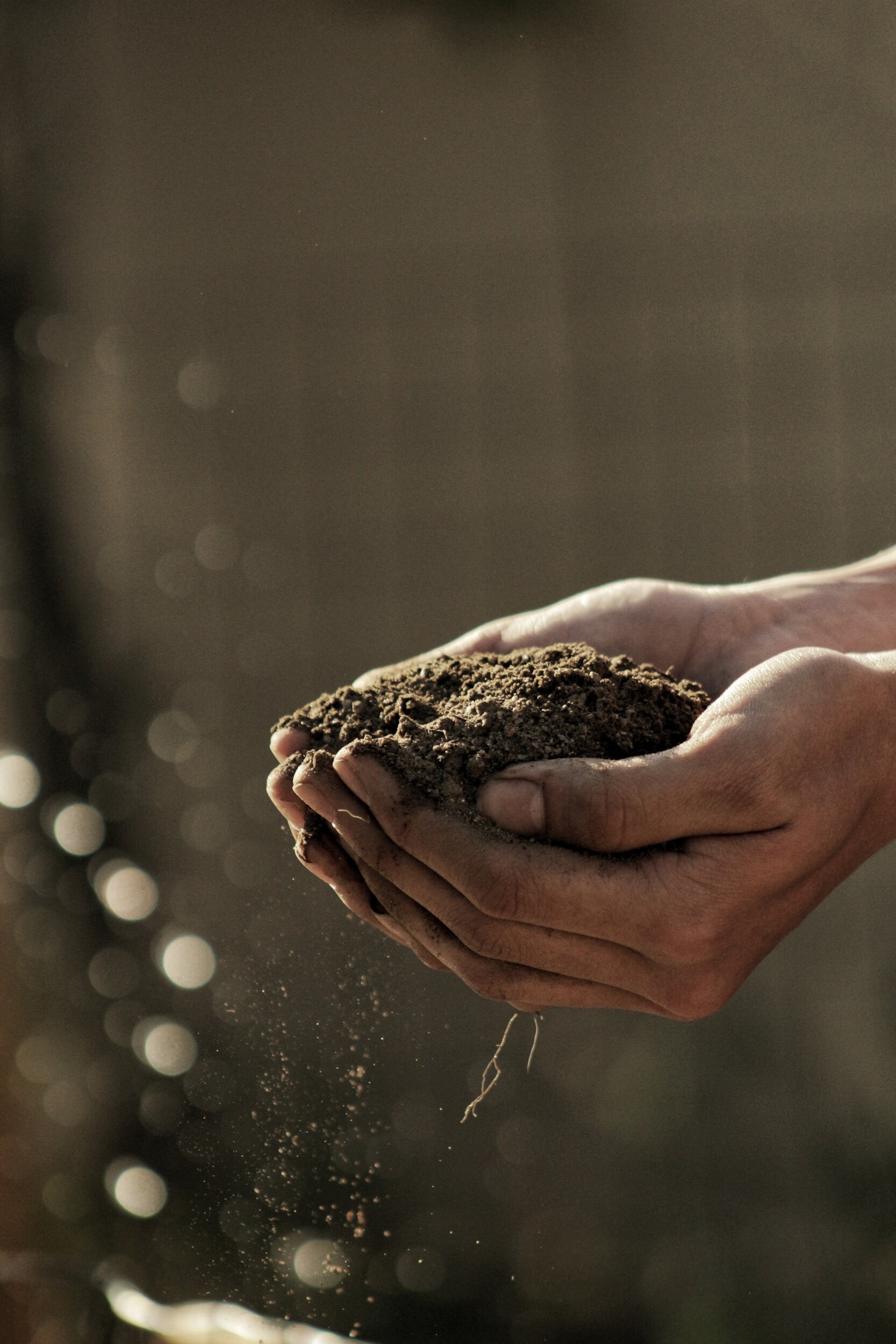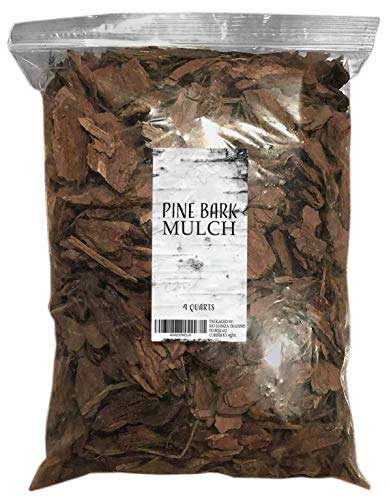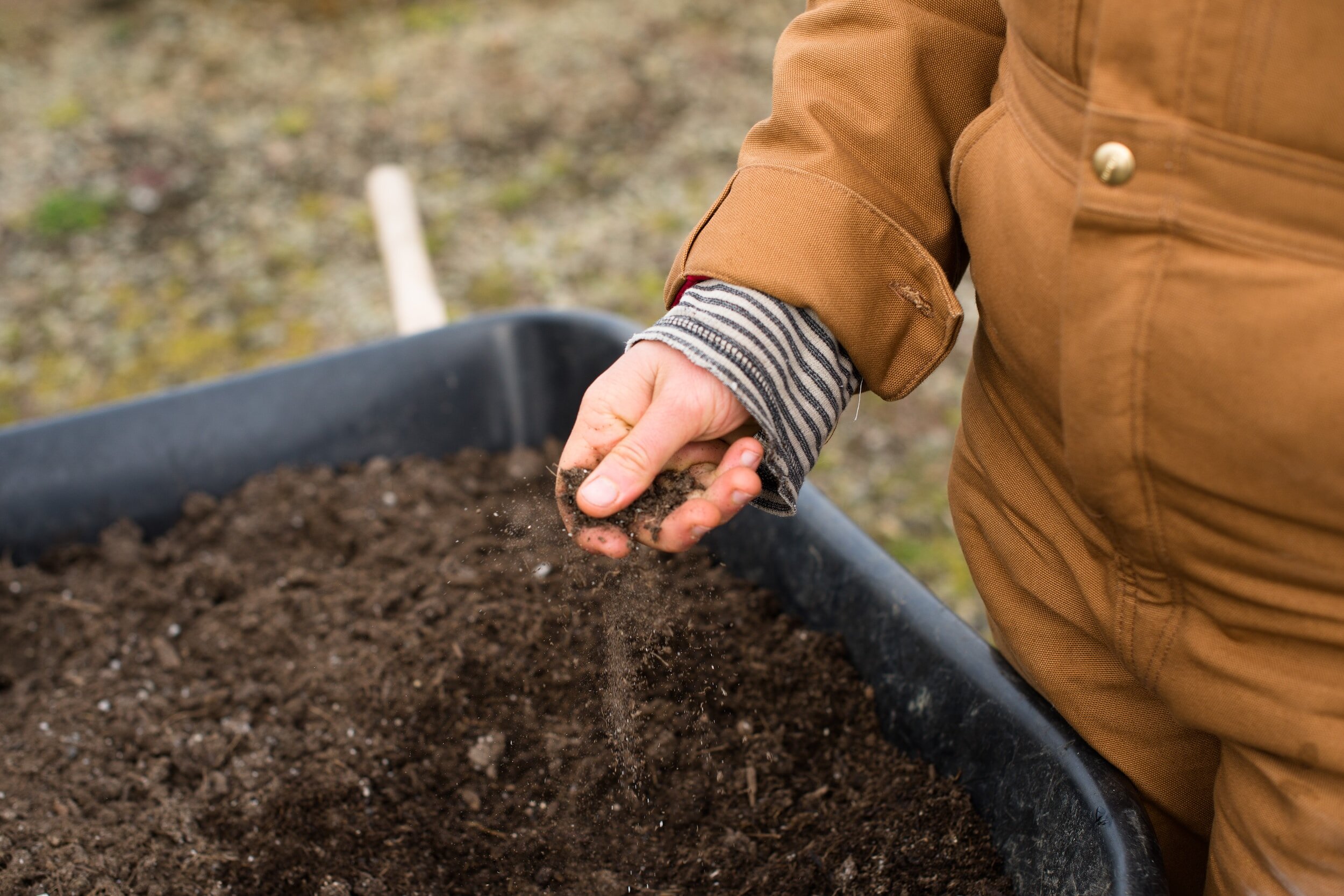Does Potting Soil Go Bad? Know the Warning Signs
This article has links to products that I may make commission from.
As gardeners we all know that good soil is like the magic carpet that our plants ride on, taking them from seedlings to blooming beauties or bountiful harvests.
However, many of us have asked the question at least once: Does potting soil go bad?
It's not an odd question considering the fact that we invest both time and money into our gardens.
Whether you're a seasoned green thumb or a new plant parent, this is an essential query that we aim to answer here.
We will dive into the lifespan of potting soil, the signs that it might not be as nutritious for your plants anymore, and how to properly store and rejuvenate your old potting soil.
Let's explore the world beneath our fingertips and ensure our plants are growing in the best environment possible.
To learn more about potting soil and compost, check out my guide:
What is potting soil?
Potting soil, also known as potting mix, is a growth medium specifically designed for plants to be grown in containers or pots.
Unlike typical garden soil, potting soil is engineered to achieve the optimal balance between water retention and drainage to ensure your potted plants grow healthily.
Potting soil doesn't actually contain garden soil or dirt, but rather, it's a blend of various organic and inorganic materials.
To learn more, check out my guide Garden Soil vs. Potting Soil: How to Choose the Right One.
The specific ingredients can vary, but they usually include components such as:
Coconut Coir
This is a sustainable alternative to peat moss and is made from the husks of coconuts.
Like peat moss, coconut coir is excellent at water retention.
Here is the coconut coir I recommend:
Compost or Other Organic Matter
This component helps to provide nutrients to the plants.
Organic matter, including well-rotted manure, compost, and leaf mold, add essential nutrients to the mix and help with moisture retention.
Perlite or Vermiculite
These inorganic substances are included to improve the aeration and drainage of the mix.
They prevent the soil from becoming too compacted, ensuring that the plant roots get enough oxygen.
Here is the perlite I recommend:
Bark or Wood Chips
These are sometimes used to add structure to the soil and help with drainage.
Here are the bark chips I recommend:
In addition to these, potting soil may also contain slow-release fertilizers and wetting agents to improve moisture retention.
Depending on the needs of the specific plants you are growing, you may select a potting soil blend with different proportions of these components.
Some plants prefer more acidic soils, while others require a higher nutrient content.
Understanding the needs of your specific plants can help you select the right type of potting soil.
To sum it up, potting soil is more than just 'dirt' in a bag.
It's a scientifically designed growing medium that offers an ideal environment for your potted plants' roots, providing them with the right balance of air, water, and nutrients.
Fertilizer can also go bad.
Read more in my guide: Does Fertilizer Go Bad? The Reality of Fertilizer Shelf Life.
The Lifespan of Potting Soil
Many gardeners often wonder: How long does potting soil last once opened? or Does garden soil expire? The answer isn't black and white.
Over time, the potency and the nutrient composition of potting soil can change, but it does not go bad or expire in the traditional sense.
However, old potting soil can lose its nutritional effectiveness and thus might not provide the plants with the nutrients they need.
Fresh and Unused Potting Soil
Fresh and unused potting soil, if stored properly, can stay effective for several years, as the organic matter and nutrients contained within it generally remain stable.
Unopened bags of potting soil are usually packed with a balanced mix of nutrients, making them a thriving medium for plant growth.
Opened and Used Potting Soil
Once the bag is opened and the potting soil is used, several factors come into play that could affect its longevity. The key among these factors is nutrient depletion. Over time, as plants absorb nutrients from the soil, it gradually loses its nutritional richness.
This is especially true for plants that are heavy feeders, draining nutrients faster from the soil. Another factor affecting the lifespan of used potting soil is the potential for the build-up of salts and other compounds.
Regular watering can lead to the accumulation of salts in the soil, which can harm plant roots and hinder growth over time.
Reused Potting Soil
The lifespan of reused potting soil greatly depends on how it's refreshed. Reused potting soil might not be as effective as new potting soil due to nutrient depletion, however, it can be revived and reused successfully.
By adding fresh organic matter, compost, or specific soil amendments, the used soil can be rejuvenated, effectively extending its lifespan.
Lifespan Indicators
To evaluate the remaining 'life' in your potting soil, look out for some key indicators.
Healthy soil is usually loose and airy, while old, spent soil often becomes dense and compacted.
Furthermore, good soil will usually have a pleasant, earthy smell, while spent or 'bad' soil may develop an unpleasant, sour or moldy odor. In summary, while the potting soil does not 'expire' in the traditional sense, it does degrade over time.
It's essential to rejuvenate and refresh the soil as needed to maintain its health and continue to support robust plant growth.
Recognizing Bad Potting Soil
The question then arises, How do you know if potting soil is bad? Look for signs like a sour smell, a noticeable presence of mold, or the growth of fungus gnats. These indicators may suggest your used potting soil needs revitalization.
If your potting soil is wet in the bag, it could develop mold or other undesirable substances. Moldy potting soil should be avoided as it can harm the plants and the beneficial microbes in the soil.
The term "bad potting soil" doesn't necessarily mean that the soil is harmful or rotten; instead, it typically indicates that the soil's nutritional content has significantly depleted or the soil has developed conditions that are unfavorable for plant growth.
Here are some signs to watch out for:
Sour or Unpleasant Smell: Fresh potting soil has an earthy smell that many gardeners love. If your potting soil starts to smell sour, foul, or rotten, it's a sign that the soil has likely gone anaerobic due to overwatering or poor drainage.
Anaerobic conditions can be harmful to plant roots and hinder plant growth.
Mold or Fungus: If you notice a moldy or white fungal layer on top of your soil, it might indicate overwatering, poor soil ventilation, or a buildup of organic material. Moldy potting soil can be harmful to plants and may require replacement or treatment.
Pests: Soil that has been stored improperly or left out for a long period might attract pests like fungus gnats or other insects. The presence of these pests can suggest that your potting soil has gone 'bad.'
Plant Health: Sometimes, the health of your plants can indicate the quality of your potting soil. If your plants appear weak, discolored, or stunted despite proper care, it could mean that your soil has lost its nutritional value or developed other problems.
Soil Structure: Good quality potting soil has a light, airy texture that aids in root growth and water drainage. If your potting soil has become overly compacted, dense, or waterlogged, it might have lost its effectiveness.
If your potting soil exhibits one or more of these signs, don't despair. Often, it can be rejuvenated with some simple amendments like adding compost, adjusting watering practices, or introducing beneficial microbes.
However, in severe cases of pest infestation or disease, it might be best to replace the soil entirely to protect your plants' health. Remember, ensuring your soil's health is integral to successful gardening.
Knowing how to recognize the signs of bad potting soil can save you from potential plant problems down the line.
How to Revive Old Potting Soil
Old soil does not necessarily need to be discarded. You can reuse potting soil by adding new, fresh potting soil and other enriching organic matter, compost, and some garden soil to the old soil to replenish the lost nutrients.
Over time, this will bring life back to your old soil and make it perfect for re-growing. While you can always opt to purchase new potting soil, reusing and reviving your old potting soil can be a cost-effective and sustainable gardening practice.
However, you must do it properly to ensure that the reused soil is still beneficial for your plants.
Steps to Reuse Potting Soil
Here's a step-by-step guide on how to reuse old potting soil:
Remove Old Plant Material: The first step is to remove any old roots, plant parts, or debris from the soil. This is important as decaying plant matter can harbor disease or pests.
Assess the Soil Condition: Next, evaluate the soil. If it's too compact or dense, or if it smells bad, it might need more work to be reusable.
Refresh the Soil: Add new organic matter to the soil to replenish nutrients. This could include compost, worm castings, or a slow-release organic fertilizer.
Lighten the Soil: Improve the soil's structure by adding perlite or vermiculite to improve drainage and aeration, which promotes healthy root growth.
Reviving Old Potting Soil
Reviving old potting soil requires adding back the nutrients that have been depleted over time. This often involves adding fresh compost or a balanced organic fertilizer. The soil pH is also important for nutrient availability, so it's a good idea to test the pH and adjust it if needed with lime (to raise pH) or sulfur (to lower pH).
Remember, plants need a balanced supply of primary nutrients (Nitrogen, Phosphorus, Potassium) and secondary nutrients (Calcium, Magnesium, Sulfur), along with trace elements for their healthy growth. Shop pH meters here.
So, instead of tossing out old potting soil, consider rejuvenating it. Not only is it a sustainable approach, but it can also be a rewarding way to be more actively involved in the health and well-being of your plants.
Storage of Potting Soil
Proper storage of potting soil can greatly extend its lifespan. Store potting soil in a cool, dry place, away from direct sunlight. Both opened potting soil and unopened potting soil will last longer when stored correctly.
Bagged potting soil, or even planting in bags of potting soil, is common practice, but ensure the bags are sealed to prevent excess moisture. Storing your potting soil correctly is just as essential as choosing the right mix.
Proper storage ensures the longevity of the soil, keeps it fresh, and preserves its beneficial properties. Here's how to store your potting soil effectively:
Seal The Bag: If you have unused potting soil in an opened bag, it's important to seal the bag tightly after each use. This helps to keep unwanted pests out and maintain the correct moisture levels.
Store In A Cool, Dry Place: Keep your potting soil in a cool, dry location. A garage, shed, or basement can make excellent storage spots.
Avoid storing your soil in direct sunlight or in areas with extreme temperature fluctuations, as this can degrade the quality of the soil and its nutrients.
Use Proper Containers: If your potting soil didn't come in a resealable bag, transfer it to a suitable container with a tight-fitting lid. Containers like plastic totes or buckets can help keep the soil fresh and pest-free. Here is the storage containers for potting soil I recommend.
Avoid Overwatering: If you've already used the soil in pots, be sure not to overwater it before storing, as excess moisture can lead to mold growth. Let the soil dry out a bit before storing your potted plants.
Keep It Clean: To prevent cross-contamination, try to keep your storage area clean. Sweep up any spilled soil and keep the outside of your soil bags or containers clean.
By following these steps, you can ensure your potting soil stays as fresh as the day you bought it, ready for your next planting project.
Remember, the way you store your potting soil can have a significant impact on its longevity and effectiveness.
The Right Soil for Different Plants
Depending on the plant type, you might need to select specific soil types. For instance, the best soil for growing vegetables might be different from what you'd need for a flower pot. Some plants prefer potting mix over garden soil due to its light, airy nature that promotes root growth.
Others may thrive in compost-rich potting soils. Knowing what your plants need is crucial to their growth. Just like humans, different plants have unique dietary needs. Some plants thrive in rich, heavy soils, while others need light, airy mixes.
Here's a quick guide to matching your plants with their ideal potting soil:
Houseplants
Most common houseplants do well in a general potting mix with good drainage. This typically includes peat moss or coconut coir, compost, and perlite or vermiculite.
This is the best soil for houseplants:
Cacti and Succulents
These plants need fast-draining soil to avoid waterlogged roots. A special cactus or succulent mix, which includes more sand or perlite, is ideal.
Here is the best soil for cacti and succulents:
Orchids: These exotic plants prefer a very airy mix that mimics their natural growing conditions. Orchid potting mixes often include large pieces of bark and perlite.
This is the best soil for orchids:
Acid-Loving Plants
Plants like azaleas, rhododendrons, and blueberries thrive in acidic soil.
A potting mix specifically designed for acid-loving plants like rhododendrons is ideal for these plants.
This is the best soil for acid-loving plants:
Seedlings
Young plants need a fine, light mix to facilitate root growth.
A seed starting mix often contains a high amount of coconut coir and less compost or other nutrients.
Here is the best soil for seedlings:
Vegetables
Edible plants generally need a nutrient-rich soil because they have a short time to produce a harvest.
A vegetable potting mix often contains a high amount of compost and may also include slow-release fertilizers.
Check out my guide to The Best Compost for Vegetable Gardens.
It's important to remember that you can also tailor your potting soil to your plants' needs by adding extra ingredients. For example, if you're growing a plant that needs well-draining soil, you might add extra perlite to your potting mix. Conversely, for a plant that likes water-retentive soil, you might add more coconut coir.
By taking the time to match your plants with their ideal potting soil, you'll provide them with a solid foundation for strong, healthy growth. Remember, when it comes to successful gardening, it all begins with the soil!
FAQs
Can I use potting soil that is 2 years old?
Yes, you can use potting soil that is two years old. However, the nutrients in the soil may have depleted over time, especially if the soil has been used before.
To ensure good plant health, you might need to replenish the soil's nutrients by mixing in fresh compost or a slow-release organic fertilizer.
Is dried out potting soil still good?
Yes, dried out potting soil can still be good. If the soil has dried out, it can be rehydrated by adding water. However, it's important to check for other signs that the soil might have gone bad, such as a sour smell or the presence of mold.
Also, if the soil has been stored improperly or for a long period, pests might have infested it.
Does potting soil go bad if it freezes?
Freezing temperatures alone will not cause potting soil to go bad. However, if the soil was left outside in a bag that wasn't sealed properly, it could get overly moist, which might lead to mold growth or other issues when the soil thaws.
Does opened potting soil go bad?
Once a bag of potting soil is opened, the soil can start to lose its nutrients over time, especially if it's exposed to unfavorable conditions like excess moisture, poor storage, or pests. However, this doesn't mean the soil is bad right after opening.
With proper storage and care, opened potting soil can stay good for a long time. It's best to use opened potting soil within a year or two for optimal plant health.
In the world of gardening, understanding your potting soil can be the difference between thriving plants and those that struggle to survive. While potting soil doesn't come with an expiration date per se, it doesn't mean it lasts forever in its prime condition.
The soil's nutritional value, texture, and overall health can degrade over time, especially once the potting soil bags are opened and the soil is used. Whether it's dealing with overly dense potting soil that is past its prime or looking to reuse old soil, a proactive approach can help restore the soil's health.
By learning how to recognize bad soil, how to revive it, and how to store it properly, you can extend the life of your potting soil and make your gardening efforts more sustainable.
It's equally important to acknowledge that not all plants have the same soil needs. Tailoring the potting mix to the needs of specific plants can significantly enhance their health and growth.
Remember, healthy soil equals healthy plants. By investing time and energy into understanding and managing your potting soil, you're setting the stage for a thriving, vibrant garden.













































